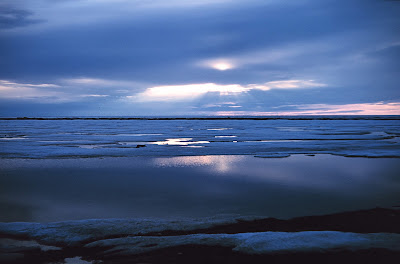 |
| M1: The Crab Nebula, captured by the Hubble Space Telescope, 2009. Credit: NASA, ESA. |
Towards the end of my book DEEP BLUE HOME I wrote about the cave paintings of Mexico's Baja Peninsula�truly a wonder of the world�including an image of the Crab Nebula supernova from the year 1054.
[O]ne of the most modest paintings on view anywhere in Baja California: a small depiction in ochre of a childlike sun, with lines radiating from a circle, nestled beside the outline of another circle more than half ?lled with ochre pigment.
 |
| North American rock art depicting the Crab Nebula supernova, circa 1054. Illustration: Harry W. Crosby, from The Cave Paintings of Baja California. |
You can see the art I'm describing on the far left in the image above:
The story of this image has a long lineage, and the starting place for its rediscovered meaning dates back to the year 1054, when Chinese astronomers noted a guest star in the constellation Taurus and recorded that its glow was visible in the daytime sky for twenty-three days and in the nighttime sky for six hundred ?fty-three days.
Little more thought was given to this celestial light for a long time. It was not noted in 1731 when the English doctor and astronomer John Bevis ?rst observed a nebulous cloud within our own Milky Way galaxy nor, more than a century later, when another English astronomer named it the Crab Nebula. The visit of the guest star was nearly forgotten until the early twentieth century, when�working backward in time to calculate the rate of expansion�astronomers surmised that the Crab Nebula was the remains of the 1054 supernova observed by ancient astronomers.
 |
| The crablike sketch made in 1844 by William Parsons, 3rd Earl of Rosse, for which the nebula was named. Image courtesy Wikimedia Commons. |
| And: |
Later the American astronomer William Miller calculated that the 1054 supernova appeared in western North America in dazzling conjunction with a crescent moon. He correlated this sight to two pieces of prehistoric rock art in Arizona, each depicting a star beside a crescent moon. Later astronomers found strikingly similar rock art of conjunct stars and crescents at other sites in the American Southwest. In 1971 the explorer Harry Crosby, traveling by mule in the Sierra de San Francisco, came upon this image of a star and a moon�the only painting of its kind in the murals of Baja California, which he later surmised was also an image of the 1054 supernova.
 |
| Chaco Canyon, 1054 supernova rock art. Photo via. |
Astronomy Picture of the Day (APOD) describes the Crab Nebula as "the mess left after a star explodes," filled with mysterious filaments:
The filaments are not only tremendously complex, but appear to have less mass than expelled in the original supernova and a higher speed than expected from a free explosion. In the nebula's very center lies a pulsar: a neutron star as massive as the Sun but with only the size of a small town. The Crab Pulsar rotates about 30 times each second.
 |
| Crab Pulsar Wind Nebula, 2008. Credit: NASA. |
This deep x-ray image of the Crab Pulsar taken from the orbiting Chandra Observatory provided the first clear view of the ghostly edges of the pulsar's wind nebula. From APOD:
The pulsar's energy accelerates charged particles, producing eerie, glowing x-ray jets directed away from the poles and an intense wind in the equatorial direction. Intriguing edges are created as the charged particles stream away, eventually losing energy as they interact with the pulsar's strong magnetic field.
The 1054 supernova occurred 6,300 years before anyone on Earth witnessed it. The explosion dismantled a star more than 37,000 trillion miles away from us. The blast radiated as much energy as our sun will emit in the course of its life, and its light traveled at the fastest speed possible, the speed of light itself, yet it still took more than sixty centuries to get here.
 |
| Credit: Danny LaCrue & the ESA/ESO/NASA Photoshop FITS Liberator. |
The beautiful mess of the Crab Nebula.














































